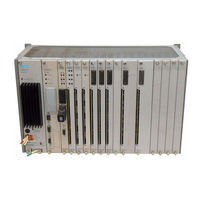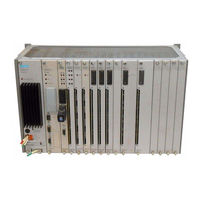Siemens SIMATIC TI505 Manuals
Manuals and User Guides for Siemens SIMATIC TI505. We have 6 Siemens SIMATIC TI505 manuals available for free PDF download: User Manual, Installation And Operation Manual
Siemens SIMATIC TI505 User Manual (127 pages)
High Speed Counter Encoder Module
Brand: Siemens
|
Category: Control Unit
|
Size: 0.96 MB
Table of Contents
-
Preface
15 -
-
Latch Output30
-
-
Divide-By-N36
-
-
Data Formats
56 -
-
-
-
-
-
Overview
75 -
-
Troubleshooting
106
Advertisement
Siemens SIMATIC TI505 User Manual (94 pages)
TIWAY 1
Table of Contents
-
Preface
11 -
Introduction
14 -
-
Overview20
-
-
Double Drops25
-
Short Drops25
-
-
-
Obstructions27
-
-
-
Reset Button38
-
-
Gateway Good39
-
Comm Active39
-
Online39
-
Receive39
-
Transmit39
-
Test Mode39
-
-
-
Introduction55
-
-
Siemens SIMATIC TI505 User Manual (91 pages)
MODNIM
Brand: Siemens
|
Category: Control Unit
|
Size: 0.5 MB
Table of Contents
-
-
Preface11
-
-
-
-
-
-
Introduction39
-
-
-
Appendix A72
-
-
-
Appendix D81
-
Overview81
-
Advertisement
Siemens SIMATIC TI505 Installation And Operation Manual (66 pages)
S5 UNLINK Adapter
Table of Contents
-
Overview
18 -
-
Transmission35
-
-
Exception50
-
Overview50
-
Native51
-
Status52
-
Read Block53
-
Write Block54
-
Define Block55
-
Gather Block56
-
Siemens SIMATIC TI505 User Manual (28 pages)
Smart Slice
Discrete I/O Module
Brand: Siemens
|
Category: I/O Systems
|
Size: 0.21 MB
Table of Contents
Siemens SIMATIC TI505 User Manual (24 pages)
Redundant I/O System
Brand: Siemens
|
Category: I/O Systems
|
Size: 0.26 MB
Table of Contents
Advertisement




